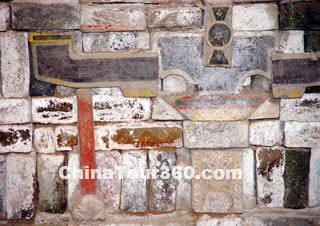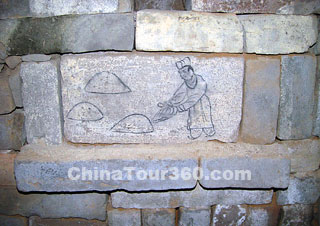Looking back over the Chinese dynasties, the collapse of the Han Dynasty (206BC-220) was followed by a long lasting period of rule by the warlords. Thereafter, beginning with the Three Kingdoms (Wei, Shu and Wu during 220-280) a period of chaos caused by civil war began. This is known as the 'Era of Disunity'.
However, in keeping with the saying 'something that has been united for a long time must be divided; something that has been divided must be united', unity was finally restored in the early years of the Jin Dynasty (266-420). At the end of the Three Kingdoms Period (220-260), Sima Yan (a prominent family in the government of the Kingdom of Wei) usurped power and established a new dynasty – the Jin Dynasty (266-420). The Jin Dynasty was divided into two periods: the Western Jin (266-316) with Luoyang as its capital city and the Eastern Jin (317-420) with Jiankang (the present Nanjing of Jiangsu Province) as its capital.
In fact, the eastern Jin Dynasty mainly dominated the area south of the Yangtze River, while Northern China was occupied by other ethnic groups. During the period from 304 to 439, many ethnic groups established their own states in this area. Geographically, fifteen states in the north and the Kingdom of Chenghan in the southwest area were called 'the Sixteen States'. The sixteen states fought against each other incessantly; the long-standing wars and conflicts destroyed the economy of the northern areas. During this period of time, the amalgamation of nations was accelerated through long-term contacts and mutual interests.
|
|
The Jin Dynasty and the following Southern and Northern Dynasties (420-589) were the only periods during which the country was unified, although this unified phase lasted for only about 150 years.
![]() Economy
Economy
Generally speaking, the economy of South China developed more than that of North China during the Jin Dynasty. Due to the incessant wars in North China many people, but especially peasants, migrated to the south of the Yangtze River searching for a more peaceful life. The shift of people bolstered the labor force in southern areas and also brought advanced production techniques and implements. Moreover, many rivers in the area south of the Yangtze River offered good irrigation opportunities for agricultural production. All these ingredients promoted the development of agriculture in this area.
During the Jin Dynasty, commerce was also developing and the capital Jiankang became the biggest commercial city in the area south of the Yangtze River. At the same time, people from the north contributed to the development of the handicraft industry.
![]() Go to the Southern and Northern Dynasties
Go to the Southern and Northern Dynasties









